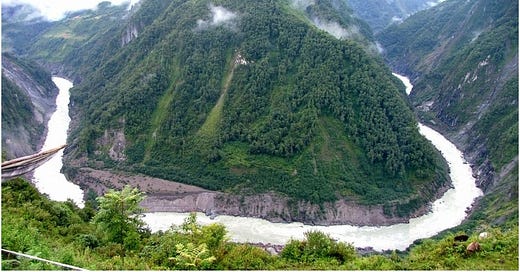By: Neeta Lal
China’s water politics imperialism, which has been intensifying over recent decades with a string of dams on some of South Asia’s most important rivers, has suddenly become critical with Beijing’s announcement of a plan to build a “super dam” on the Brahmaputra River, threatening India’s territorial integrity.
The gargantuan, 60-gigawatt structure – whose proposal has been outlined in the country’s 14th Five-Year Plan to be implemented from next year – will reportedly come up at Medog, on the lower reaches of the Yarlung Zangbo river. The spot lies close to the Line of Actual Control in Tibet which borders India’s northeastern state of Arunachal Pradesh.
Beijing’s intent to control the flow of Brahmaputra, as is its predilection to control almost anything around it, has sent temperatures soaring in New Delhi. As with its expressed ownership of the entire South China Sea to the distress of the littoral nations and the United States, which has committed to protecting the sea lanes, Beijing has claimed ownership not just of the headwaters of the Brahmaputra but six other rivers that arise on the Tibetan plateau – the Indus, the Ganges, the Irrawaddy, the Salween, the Mekong, and the Yangtze – the only one that flows into its own territorial boundaries. Almost half of that water from those rivers – 48 percent – flows into India, giving China effective control over India’s economy.



